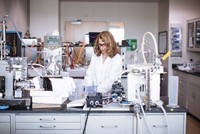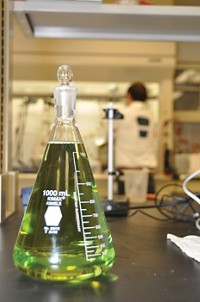Advertisement
Grab your lab coat. Let's get started
Welcome!
Welcome!
Create an account below to get 6 C&EN articles per month, receive newsletters and more - all free.
It seems this is your first time logging in online. Please enter the following information to continue.
As an ACS member you automatically get access to this site. All we need is few more details to create your reading experience.
Not you? Sign in with a different account.
Not you? Sign in with a different account.
ERROR 1
ERROR 1
ERROR 2
ERROR 2
ERROR 2
ERROR 2
ERROR 2
Password and Confirm password must match.
If you have an ACS member number, please enter it here so we can link this account to your membership. (optional)
ERROR 2
ACS values your privacy. By submitting your information, you are gaining access to C&EN and subscribing to our weekly newsletter. We use the information you provide to make your reading experience better, and we will never sell your data to third party members.
Environment
Presidential Honors
Awards recognize innovative pollution-prevention strategies
by Stephen K. Ritter
July 2, 2007

Cleaner, cheaper, and smarter chemistry. That's the popular description of the science and technology behind the Presidential Green Chemistry Challenge Awards. This year's class of five award winners, drawn from more than 100 nominees, was recognized for their superlative accomplishments during a ceremony held on June 26 at the National Academy of Sciences in Washington, D.C.
The Green Chemistry Challenge "strives to facilitate the discovery of new ways to protect human health and the environment through scientific creativity," commented Charles M. Auer, director of the Environmental Protection Agency's Office of Pollution Prevention & Toxics, which administers the awards program.
The awards highlight green chemistry's "core purpose of finding cleaner approaches to chemical and industrial processes so that we not only move forward as an innovative and productive society but also ensure that future generations will have a healthy environment in which to thrive," added American Chemical Society President Catherine T. Hunt. Since the awards program's inception in 1995, many observers have recognized that "the key to doing well by doing good is to be found in the best science and the best engineering," she said.
The 2007 award recipients and their technologies are as follows:
Michael J. Krische of the University of Texas, Austin, garnered the academic award for developing a broad class of efficient hydrogen-mediated carbon-carbon-bond-forming reactions that generate minimal waste. During these catalytic hydrogenations, two unsaturated organic molecules exposed to hydrogen gas couple via a new carbon-carbon bond to create a single, more complex product.
NovaSterilis, Ithaca, N.Y., was presented with the small-business award for creating an environmentally friendly medical sterilization technique. The system employs supercritical carbon dioxide and a peroxide, rather than the traditional toxic ethylene oxide or gamma radiation, for sterilizing bone and tissue transplants, implantable drug delivery devices, and medical instruments.
Kaichang Li of Oregon State University; Columbia Forest Products, Greensboro, N.C.; and Hercules Inc. joined forces to win the award for greener synthetic pathways for creating soy protein-based adhesives as low-toxicity replacements for conventional formaldehyde-based adhesives used to make plywood and other wood composites.
Headwaters Technology Innovation, Lawrenceville, N.J., was recognized with the greener reaction conditions award for devising a direct synthesis of hydrogen peroxide from H2 and O2 using a selective palladium-platinum nanocatalyst. The process, being commercially developed in collaboration with Degussa, is an advance over the commercial anthracene-anthraquinone process, which is more complex, energy-intensive, and expensive.
Cargill was selected in the designing greener chemicals category for coming up with a way to prepare polyols from soybean oil instead of petroleum. Polyols are monomers containing multiple alcohol groups that are coupled with an isocyanate monomer to make flexible and rigid polyurethane foams used in furniture, bedding, and automobiles.
James B. Gulliford, assistant administrator of EPA's Office of Prevention, Pesticides & Toxic Substances, described this year's award-winning technologies as "nothing short of incredible." He added that each recipient demonstrates "not only the value of scientific innovation but also how innovation partnered with good environmental practices translates into good business practices."





Join the conversation
Contact the reporter
Submit a Letter to the Editor for publication
Engage with us on Twitter